The article originally appeared in the July/August issue of ESSENCE
It was 2:30 one February morning. I had just landed at Trinidad’s Piarco International Airport on a red-eye flight from Miami for my first carnival of the season. Going home to sleep wasn’t an option. My crew and I were headed straight to a fete that started promptly at 4 a.m. As we made our way along Maracas Bay, I could feel the bass thumping in the distance. The vibration from the oversize speakers intensified as we drew closer, signaling that we’d arrived.
After a quick clearance through security, wristbands secured, bright cups in hand, I turned the corner and entered the fete. In front of me, thousands of people were gyrating to the music in a euphoric trance. Amazed by the sight of their motion and joy, I thought, Now, this is a fete. A pristine beach bordered the dance floor on one side and cascading mountains rose above us on another.
The setting was picturesque, and the vibes were electric. Before we knew it, we had made friends from Atlanta, Puerto Rico and Jamaica. They had come to town for carnival, too. Soon the sun began to rise, cueing the water trucks to start hosing down the crowd, panning from left to right, soaking everyone as the DJ chanted loudly, “Welcome to the soca kingdom.” With my hands in the air, head tilted back and the rhythm of the music controlling my waistline, I felt free. There were no limits. I was home.
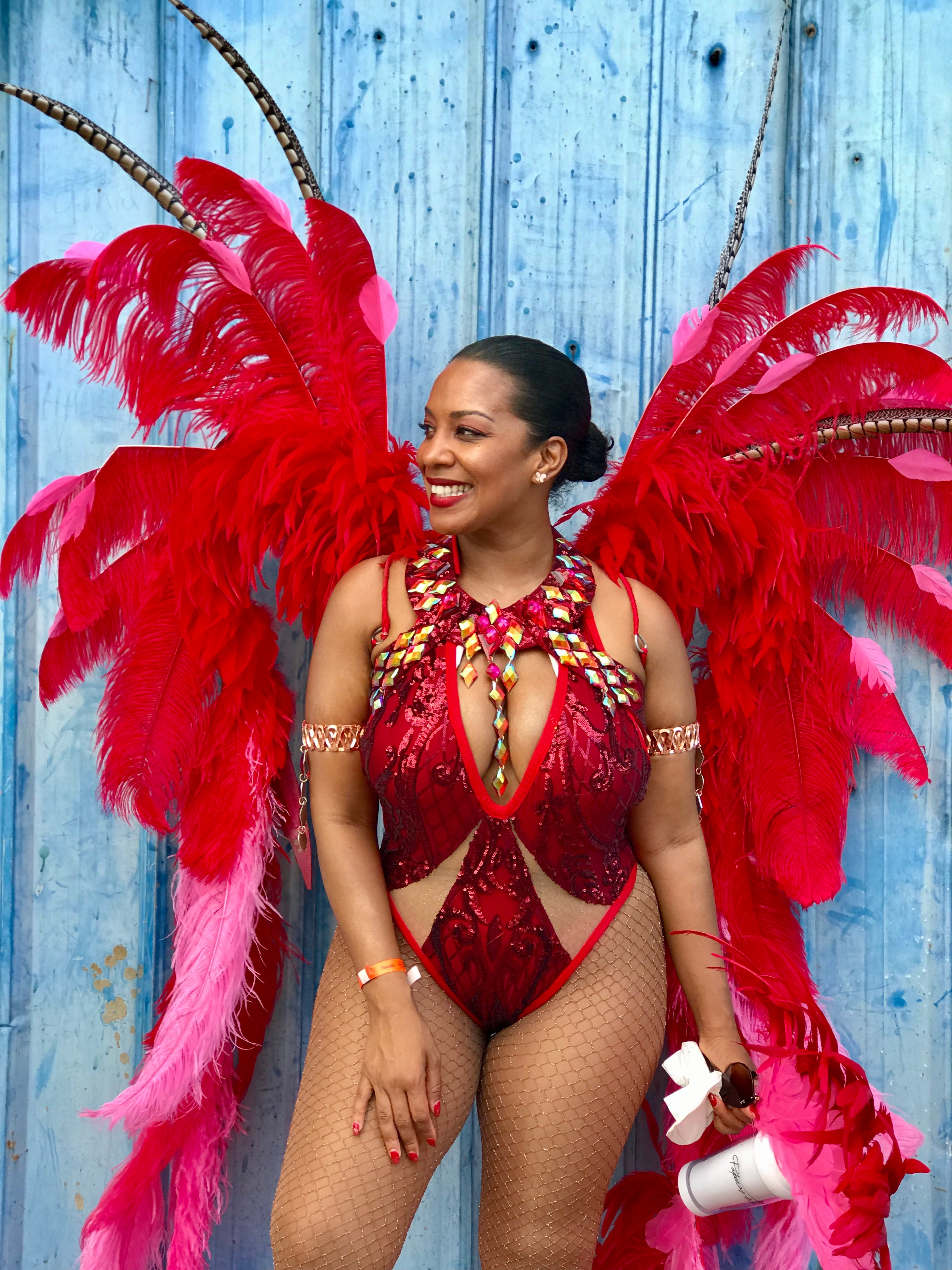
I am a daughter of Trinidad and Tobago, and the birthplace of carnival in the Caribbean, the culture runs through my veins. My family get-togethers, or “small limes” as they’re called, were spent listening to my elders sharing their own fete experiences and recounting stories about the glory of “playing ah Mas,” the elaborate costume presentations you see today. I learned the powerful role that music played in shaping Trinidadian culture and the way it continues to weave through the country’s rich history. In many ways, carnival is our church, and soca music has become our gospel. We fete every year because we have to. It’s an integral part of who we are.
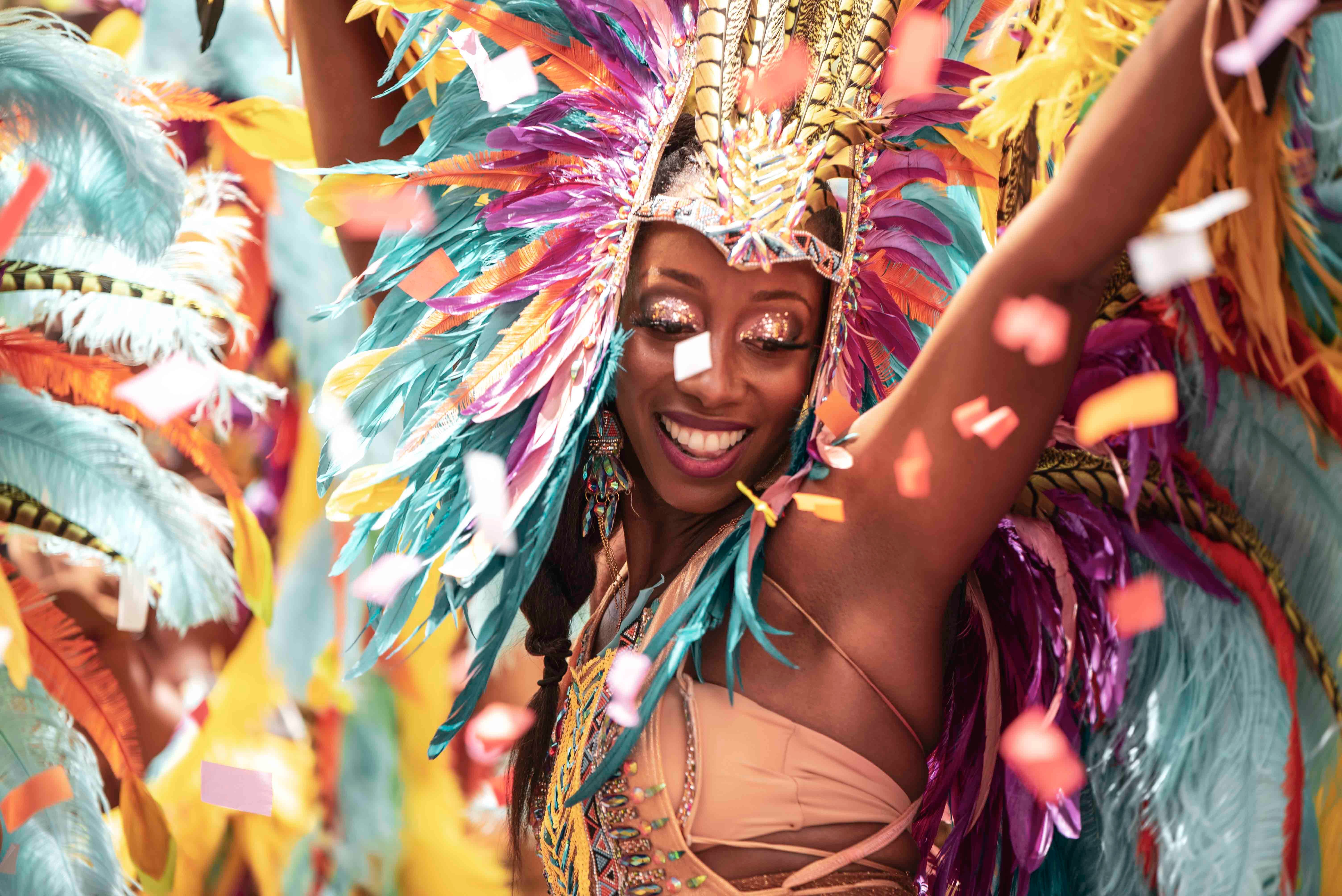
Carnival’s Roots
In the early 1800’s French settlers flocked to Trinidad and Tobago, bringing to the twin islands their annual pre-Lent celebrations of Mardi Gras (Fat Tuesday), similar to those held in New Orleans. The settlers often staged large-scale masquerades and threw elaborate street parties to commemorate the festivities. At the time West African slaves were forbidden to partake in any of the French customs and instead mocked the plantation owners with chants in their native tongue and exuberant demonstrations that created a tradition of their own, known as canboulay. Calypso music, the mother of soca, is rooted in canboulay, as slaves used song to protest their bondage and express dissatisfaction with their conditions.
Over time, carnival celebrations spread throughout the West Indies, where Africans blended their unique styles and rituals with those of the Spanish, Indian and Creole settlers throughout the island chain. After emancipation, many islands, including St. Vincent, the Virgin Islands, St. Lucia and Antigua, moved away from celebrating during the pre-Lent season and hosted carnivals throughout the year. Barbados celebrated the end of the sugarcane harvest, naming their carnival Crop Over. Grenada called theirs Spicemas because of the abundance of nutmeg and other spices native to the island.
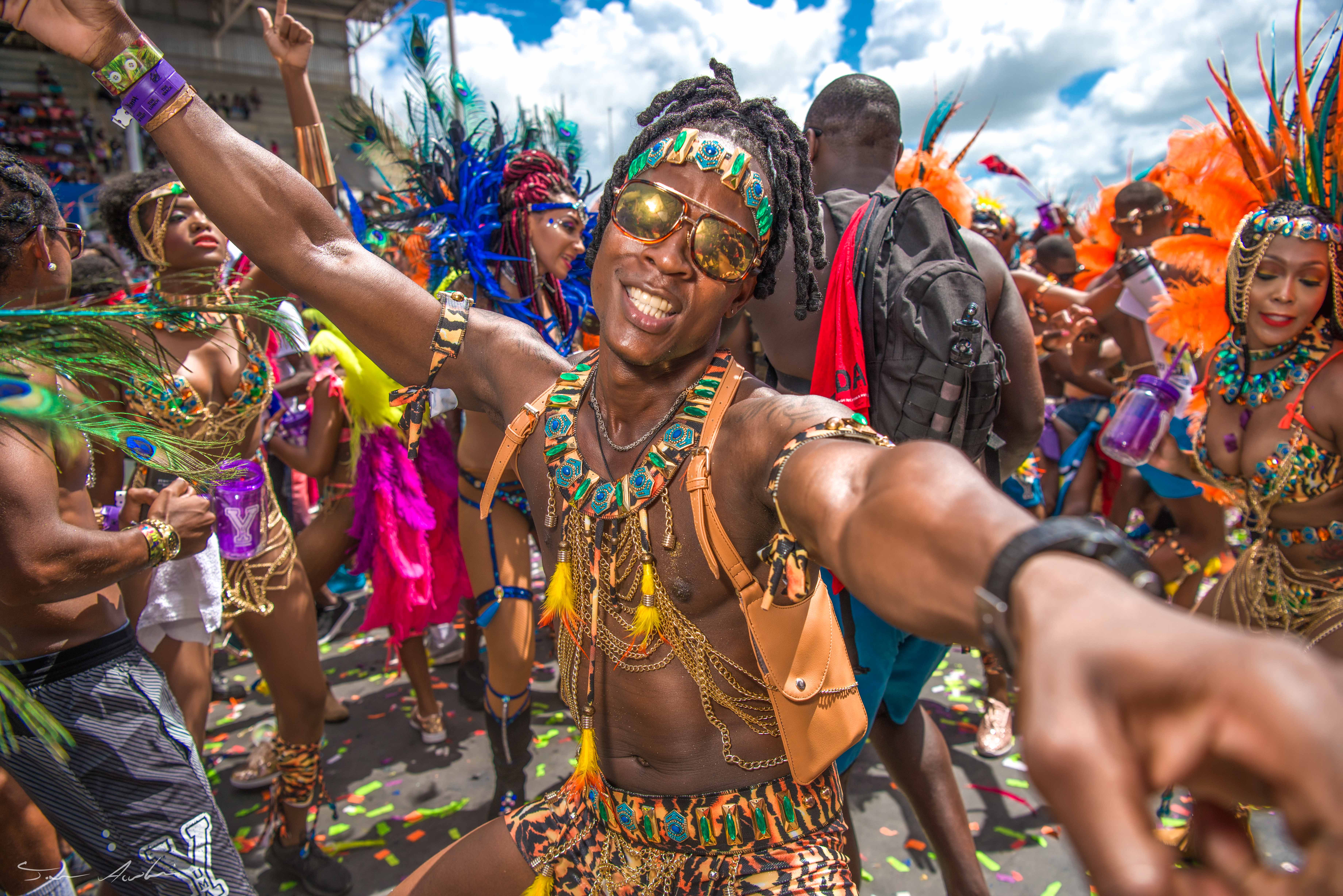
As people of African descent dispersed throughout the diaspora, the commemorations migrated, too. Today the biggest global fetes include Caribana in Toronto, Notting Hill in London and Brooklyn’s famous West Indian American Day Carnival & Parade on Eastern Parkway. Each boasts more than 1 million attendees, with Miami Broward Carnival in October closing out the season. At all these worldwide events, one ritual continues to be reenacted each year: Old Mas, or, as it’s more widely known, J’ouvert.
Welcome to J’ouvert
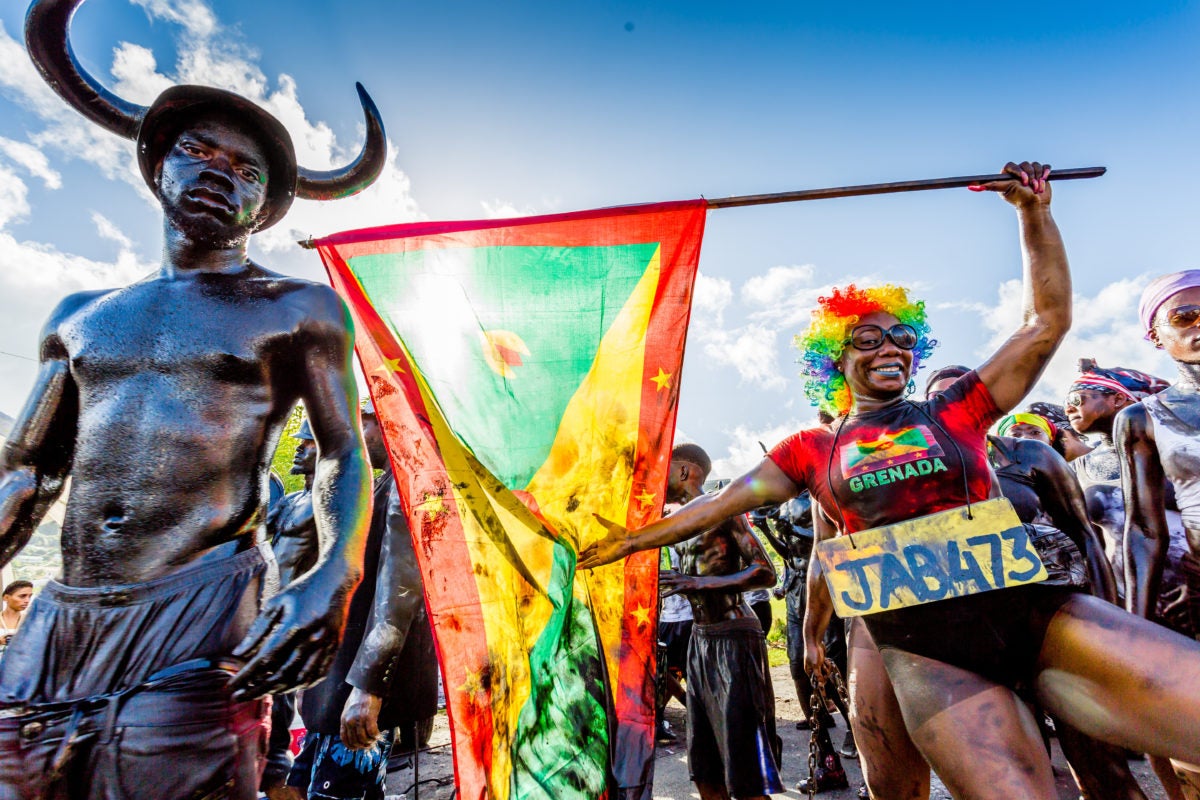
After days of nonstop feting, I woke exhausted at two hours past midnight for what is the official start of carnival, J’ouvert morning, or the darkness before dawn. Forcing myself out of bed, I threw on my oldest clothes and sneakers, wrapped my hair and headed out the door to meet friends in the center of Port of Spain for the Cocoa Devils J’ouvert band linkup. During J’ouvert, you have the option of joining one of the many all-inclusive bands that offer drinks, food and skin covering of your choice based on their annual theme. You can choose to completely cover your body in oil, mud, paint or cocoa, much as enslaved people once did as a form of resistance.
As the music trucks pushed off and the loud bass kicked in, we began to move in unison, “chipping” down some of the same roads that many of our ancestors marched on centuries ago during their trek to emancipation. If there is one moment when I feel the spirit of carnival in my bones, it would be J’ouvert.
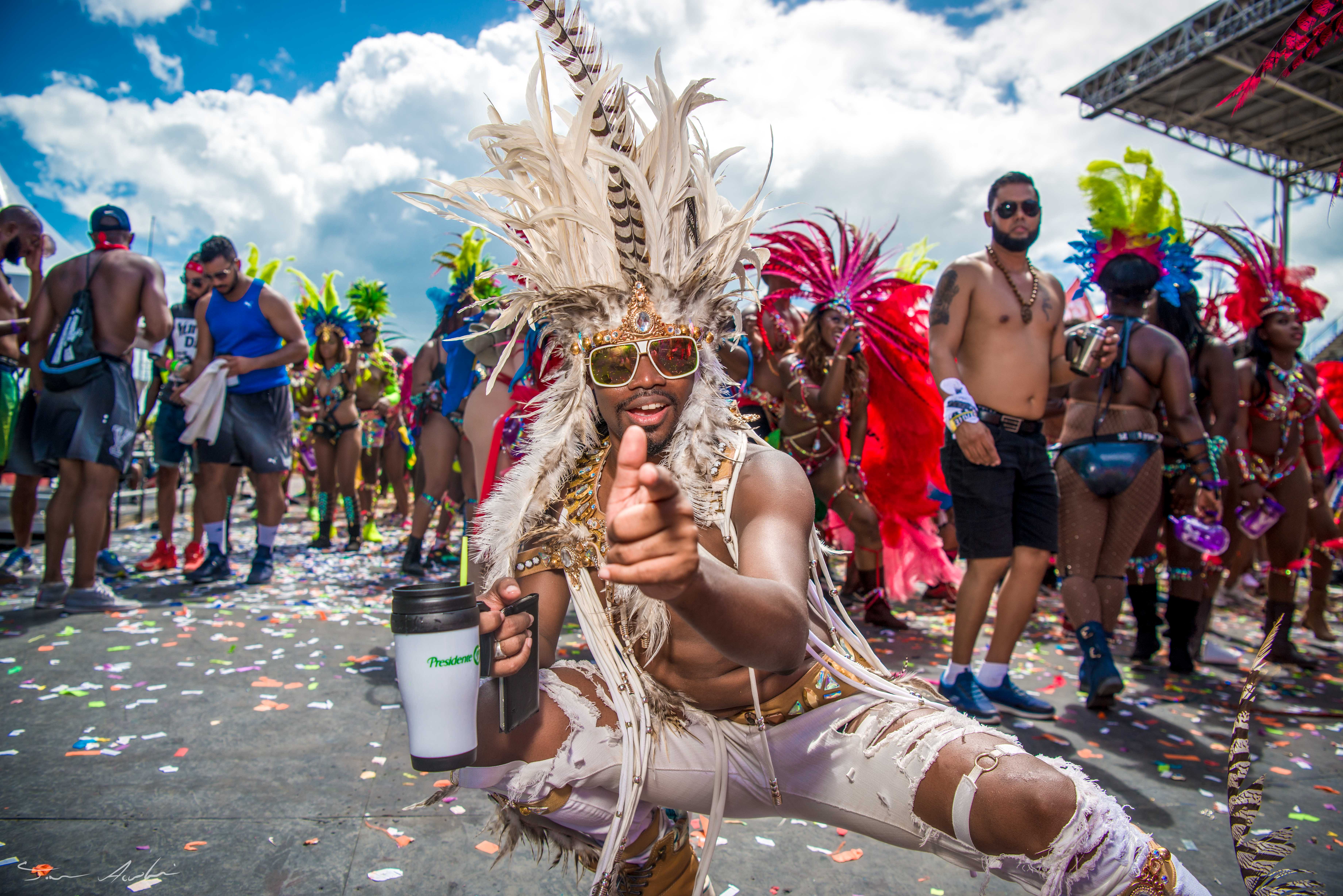
There’s no rich, poor, old, young—no judgment during the predawn darkness, only pure love, and that is the essence of carnival. When you’re immersed in it, whether you’re from the Caribbean or not, the energy moves through you, connecting you to everyone else. Then, as the sun rises and the mud or paint washes off, you transform into the character that you will be portraying that year. It’s time to don the elaborate costumes dripping with jewels and feathers, better known as Pretty Mas.
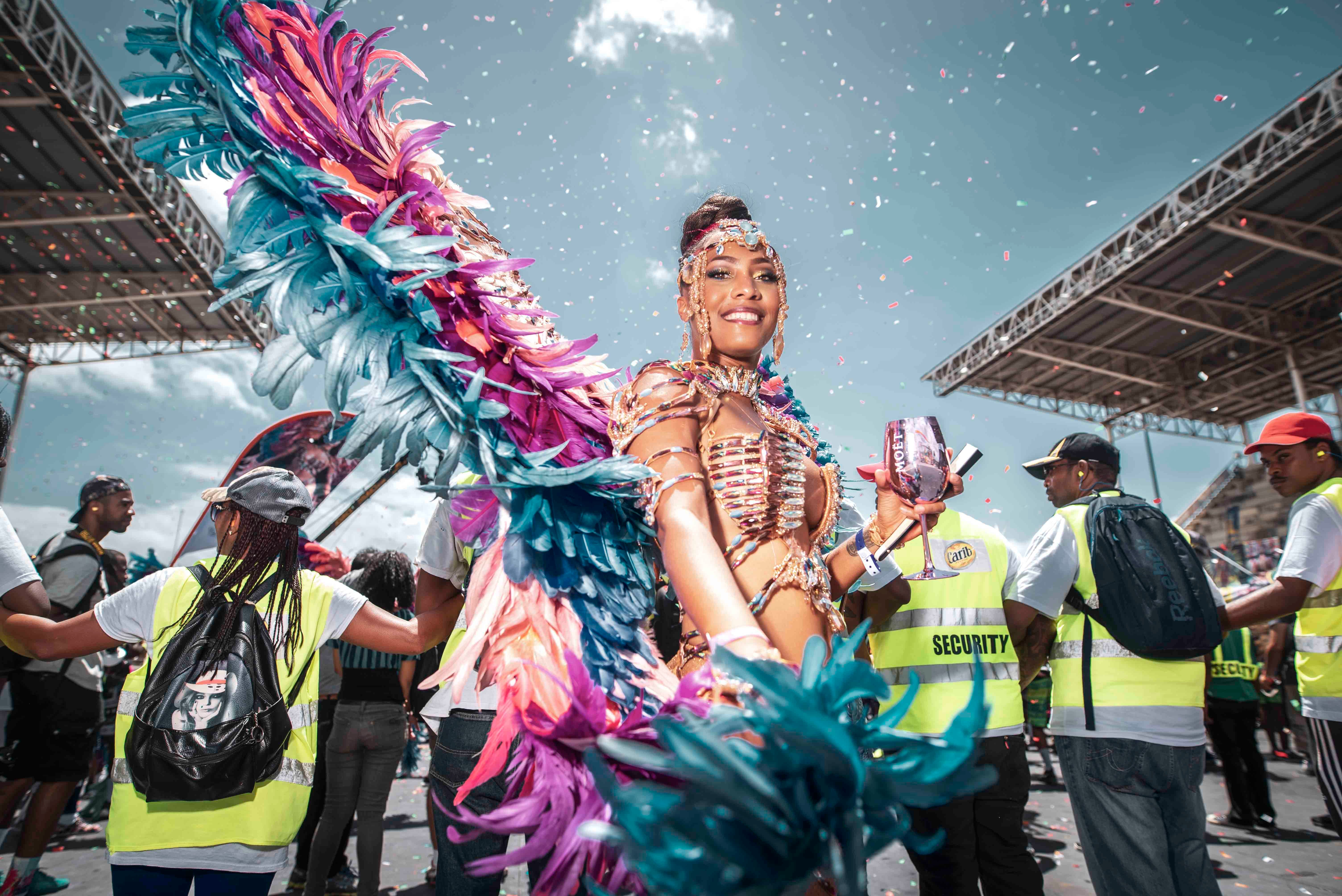
“Play ah Mas”
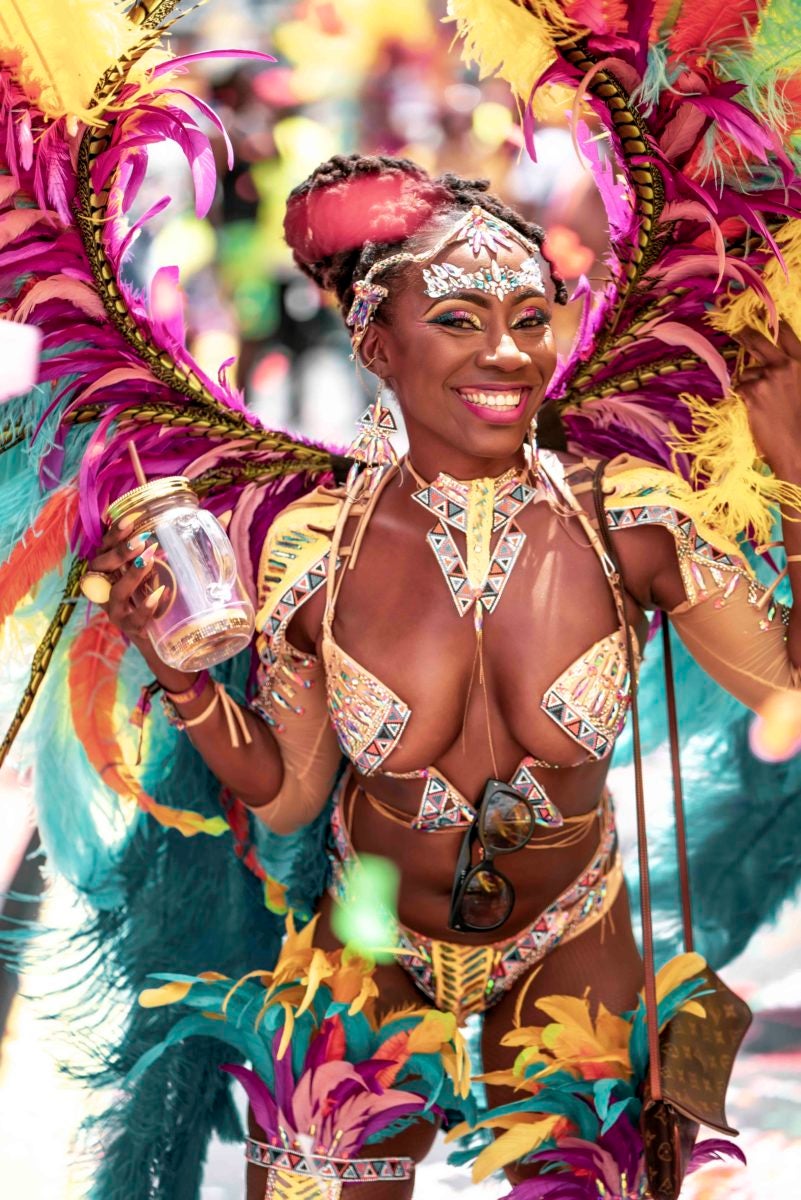
During Pretty Mas the vibrant colors and beauty of carnival are on full display. Masqueraders—as they are often referred to—wait a full year for this two-day climactic experience, which at its core is a celebration of freedom. “Playing ah Mas” is essentially your » safe zone, the space to be your most vulnerable, sexy, beautiful self. This is a time when women, in particular, shine. People admire all sizes and shapes in costumes that are made to accentuate, not hide, a woman’s natural curves.
The elaborate designs are sketched many months in advance and are usually launched at events that are full-fledged parties in themselves. The freedom of Mas is empowering. Masqueraders cross the stage or dance and “show out” for the crowd at one of the many judging points along the route. You can choose to “take a wine” or “get on bad” because in Caribbean culture, “wining” isn’t seen as an act of disrespect but as a sultry expression of confidence.
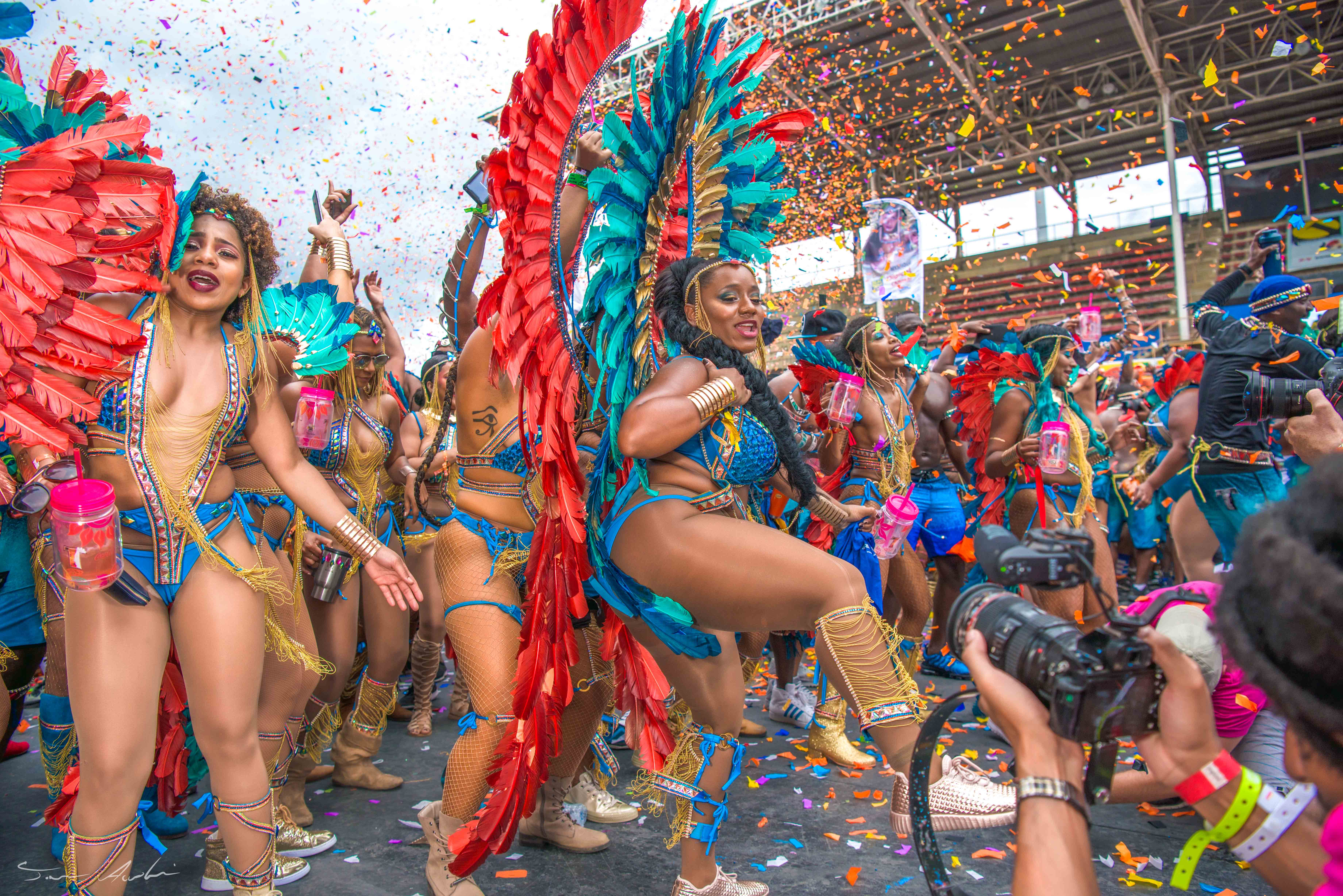
I asked Trinidadian costume designer and Project Runway star Anya Ayoung Chee about her creative process for Mas. “When designing, I consider the movement and angles that make women feel beautiful,” she says. “I design clothes to be sensual in a nonobvious way, and so I attempt to do the same for carnival with the added exuberance that costuming requires.”
Each year one of the things I look forward to most during Pretty Mas is passing out pieces of my costume to onlookers in the crowd. I seek out little brown girls along the roadside and hand them small pieces of jewelry or colorful feathers plucked from my collared wings, giving them a taste of playing ah Mas, if only for a moment.
Jump and Wave
There is no denying that the carnival scene has caught fire. You can’t browse the Gram without seeing a new Mas band launch or hearing a new soca song buzzing. Tourists from around the world flock to the Caribbean and other locales across the diaspora by the millions to get a taste of the sweet action and “take a jump” for themselves.
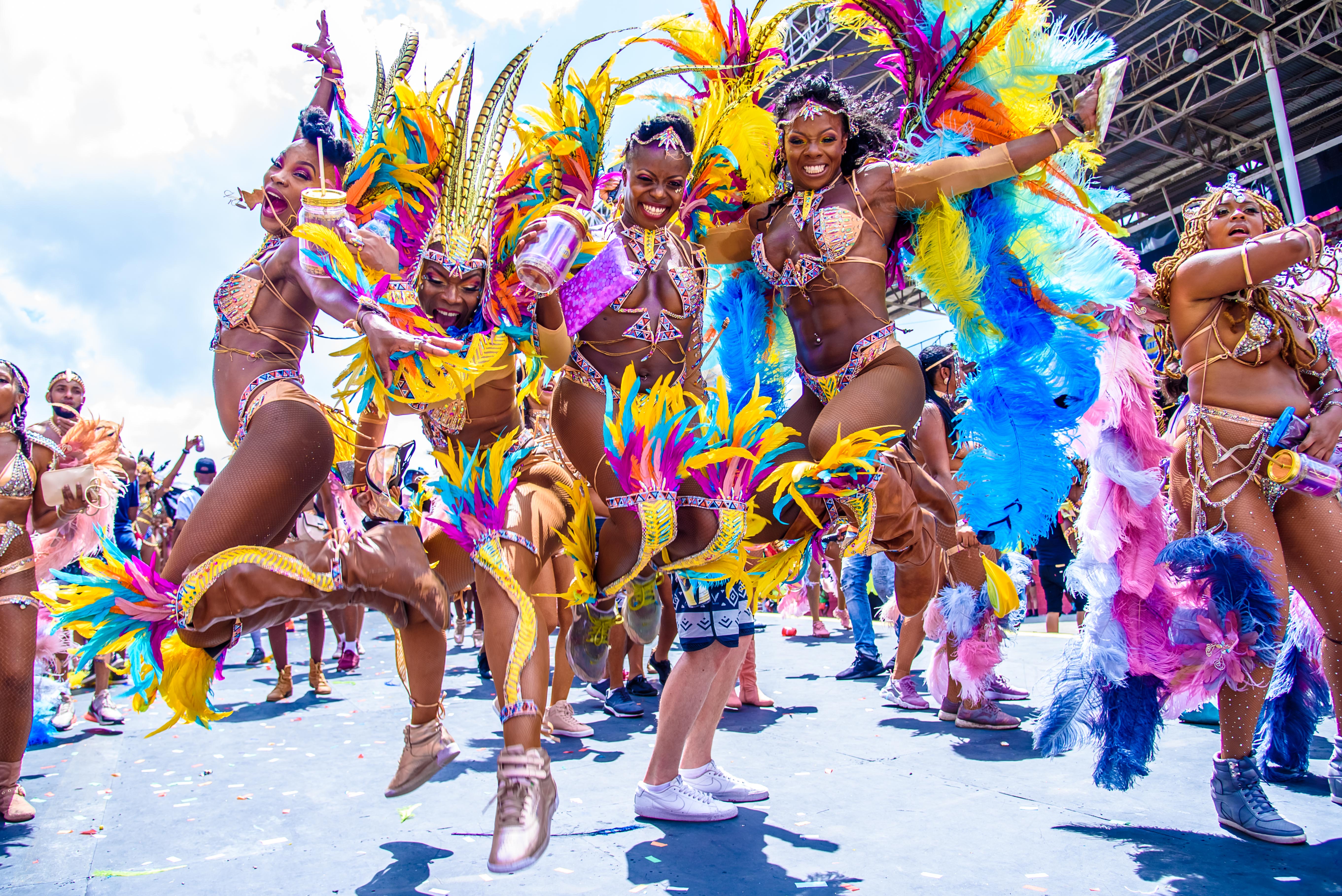
This soul-shaking experience will alter your beliefs about what living out loud truly means and give you an enlightened perspective on what so many fought for in their march toward freedom. And oh, what a feeling it is to love and embrace carnival culture, to allow the spirit to grab hold of your soul and let it love you back. As you finalize your travel plans for 2019, switch things up a bit and pick a festival of your choice to experience. Big or small, there’s one for you, because carnival truly lives in us all.

